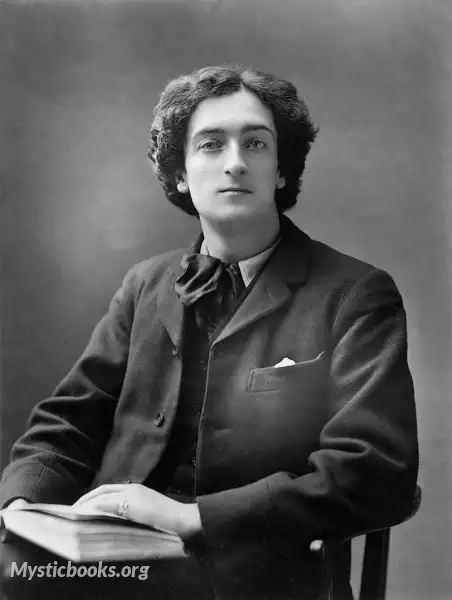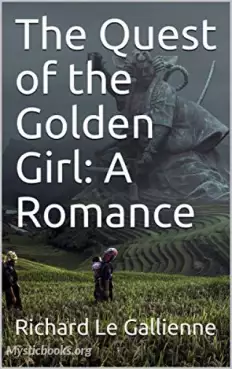
Timeline
Title
Country/Nationality
Richard le Gallienne
Richard Le Gallienne was an English author and poet. The British-American actress Eva Le Gallienne (1899–1991) was his daughter by his second marriage to Danish journalist Julie Nørregaard (1863–1942).
He was born Richard Thomas Gallienne in Liverpool, England, to a middle-class family. He attended the (then) all boys public school Liverpool College. After leaving school he changed his name to Le Gallienne and started work in an accountant's office in London. In 1883, his father took him to a lecture by Oscar Wilde in Birkenhead. He soon abandoned this job to become a professional writer with ambitions of being a poet. His book My Ladies' Sonnets appeared in 1887, and in 1889 he became, for a brief time, literary secretary to Wilson Barrett. In the summer of 1888 he met Wilde, and the two had a brief affair. Le Gallienne and Wilde continued an intimate correspondence after the end of the affair.
He joined the staff of the newspaper The Star in 1891 and wrote for various papers under the name Logroller. He contributed to The Yellow Book, and associated with the Rhymers' Club.
His first wife, Mildred Lee, and their second daughter, Maria, died in 1894 during childbirth, leaving behind Richard and their daughter Hesper Joyce. After Mildred's death he carried with him at all times, including while married to his second wife, an urn containing Mildred's ashes. Rupert Brooke, who met Le Gallienne in 1913 aboard a ship bound for the United States but did not warm to him, wrote a short poem "For Mildred's Urn" satirising this behaviour.
In 1897 he married the Danish journalist Julie Nørregaard. She became stepmother to Hesper, and their daughter Eva was born 11 January 1899. In 1901 and 1902, he was a writer for The Rambler, a magazine produced by Herbert Vivian intended to be a revival of Samuel Johnson's periodical of the same name.
In 1903 Nørregaard left Richard, taking both of his daughters to live in Paris. Nørregaard later sent Hesper to live with her paternal grandparents in an affluent part of London while Eva remained with her mother. Julie later cited his inability to provide a stable home or pay his debts, alcoholism, and womanising as grounds for divorce. Their daughter Eva would grow up to take on some of her father's negative traits, including womanising and heavy drinking.
Le Gallienne subsequently became a resident of the United States. He has been credited with the 1906 translation from the Danish of Peter Nansen's Love's Trilogy, but most sources and the book itself attribute it to Julie. They were divorced in June 1911. On 27 October 1911, he married Mrs. Irma Perry (née Hinton), whose previous marriage to her first cousin, the painter and sculptor Roland Hinton Perry, had been dissolved in 1904. Le Gallienne and Irma had known each other for some time and had jointly published an article as early as 1906. Irma's daughter Gwendolyn Hinton Perry subsequently called herself "Gwen Le Gallienne" but was almost certainly not his natural daughter, having been born circa 1898.
From the late 1920s, Le Gallienne and Irma lived in Paris, where Gwen was by then an established figure in the expatriate bohème and where he wrote a regular newspaper column.
Le Gallienne lived in Menton on the French Riviera during the 1940s. During the Second World War he was prevented from returning to his Menton home and lived in Monaco for the rest of the war. His house in Menton was occupied by German troops and his library was nearly sent back to Germany as bounty. Le Gallienne appealed to a German officer in Monaco, who allowed him to return to Menton to collect his books. During the war Le Gallienne refused to write propaganda for the local German and Italian authorities and, with no income, once collapsed in the street owing to hunger.
In later times he knew Llewelyn Powys and John Cowper Powys.
Asked how to say his name, he told The Literary Digest the stress was "on the last syllable: le gal-i-enn'. As a rule I hear it pronounced as if it were spelled 'gallion,' which, of course, is wrong." (Charles Earle Funk, What's the Name, Please?, Funk & Wagnalls, 1936.)
A number of his works are now available online.
He also wrote the foreword to "The Days I Knew" by Lillie Langtry 1925, George H. Doran Company on Murray Hill New York.
Le Gallienne is buried in Menton in a grave whose lease (license No. 738 / B Extension of the Trabuquet Cemetery) does not expire until 2023.
Books by Richard le Gallienne

The Quest of the Golden Girl
The main character fears that he will never get married and performs a long pilgrimage whose goal is the perfect companion, the girl God meant for him. On the way he meets many people and encounters many interesting situations till, finally returning...

The Silk-Hat Soldier and Other Poems in War Time
The poems in this collection reflect the poet's thoughts and feelings about the war, its causes, and its effects on society and humanity. "The Silk-Hat Soldier and Other Poems in War Time" is a collection of poetry written by Richard le Gallienne, pu...

Rubáiyát of Omar Khayyám (Le Gallienne)
Richard le Gallienne was an English poet and critic, who, although unfamiliar with the Persian language, had a profound interest in the Rubaiyat of Omar Khayyam. In 1897 he published a collection of 211 quatrains, which was based on earlier English t...

Worshipper of the Image
"The Worshipper of the Image," by Richard Le Galliene first published in 1900. The protagonist Antony, a poet buys a death mask in an antique shop and soon realizes it resembles his wife Beatrice. The death mask, Antony names "Silencieux," becomes a...

October Vagabonds
Richard and his friend Colin must sadly return from their distant hermitage to New York City at summer's end. However, rather than take the train on the 430 mile trip to the city, the two decide to walk the route, for as Richard stated: "Don't you ha...

Different Girls
This is a collection of the best short stories about girls published in Harper's Magazine from 1895 to 1906. The girls in these stories are not the typical 'girl' from late 19th century novels. They are..different. They are actually [gasp] real peopl...

Epitaph On A Goldfish
LibriVox volunteers bring you 18 recordings of An Epitaph On A Goldfish by Richard le Gallienne. This was the Weekly Poetry project for October 11, 2020. ------Richard Le Gallienne was an English author and poet. - Summary by Wikipedia

Best Dog Stories
A collection of adult stories - sad, humorous, and adventurous - about Man's Best Friend. NOTE: Some of these selections contain violence and racial stereotypes that will be objectionable to some listeners. - Summary by TriciaG

Rainbow
LibriVox volunteers bring you 20 recordings of The Rainbow by Richard Le Gallienne. This was the Weekly Poetry project for November 7, 2021. ------ In 2016 an exhibition on the life and works of Richard Le Gallienne was held at the central libra...

Winter
LibriVox volunteers bring you 15 recordings of Winter by Richard Le Gallienne This was the Fortnightly Poetry project for December 24, 2023. ------ Richard Le Gallienne was an English author and poet. Our Poem is taken from The Lonely Dancer a...